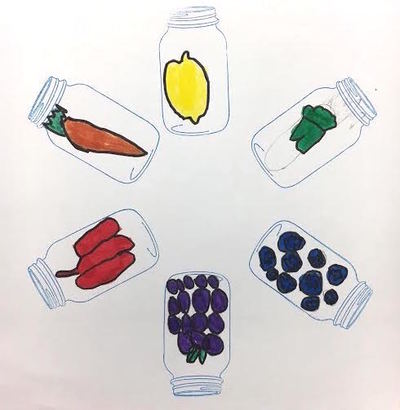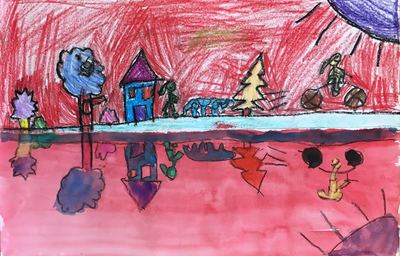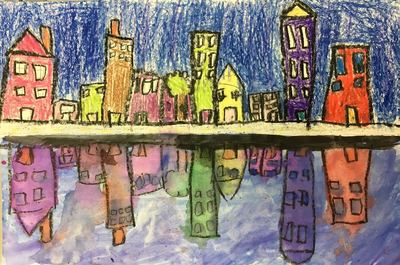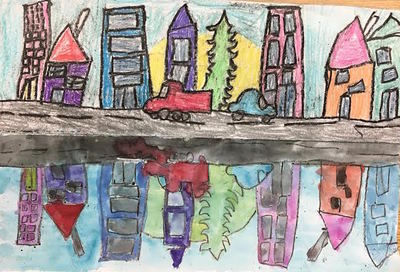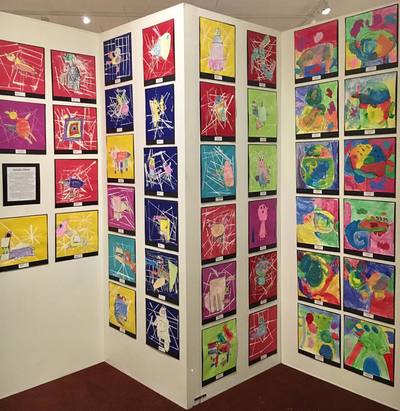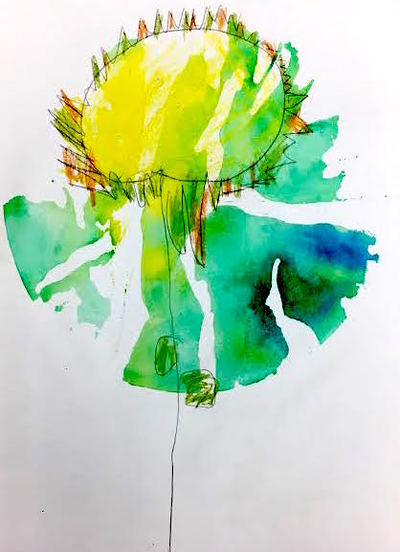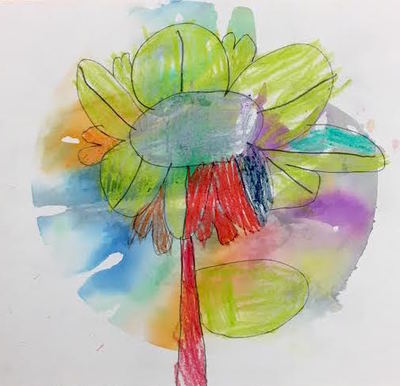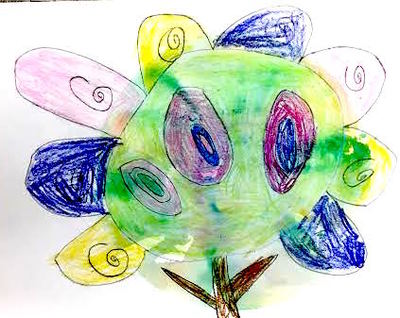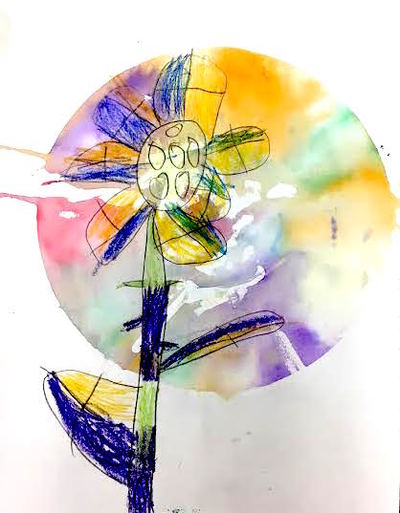|
For this project I introduced several different vocabulary terms to describe textures. Bumpy, smooth, rough, prickly, soft, furry, fluffy, slick, etc. Students came up one by one to feel a different texture and try to guess by describing its characteristics. Students then created texture collages with several different materials.
0 Comments
For this project students put their knowledge of the color wheel to the test! Brainstorming as a group we went over what kinds of foods were yellow, green, etc. Each piece of paper handed out had six pre-stamped mason jars; students were asked to fill their each jar with a chosen food item that would correctly follow the color wheel.
In this project students learned about reflections, where reflections occur, landscapes, wax transfers, resists, solid color and watercolor washes. Top half was created with crayon, bottom half with watercolor.
How do students learn through experimentation? With this one day "art party" students were asked to experiment and sculpt different shapes such as cubes, spheres, coils and create an animal that stands on its own. Since they couldn't keep the play dough there wasn't pressure to make any one thing. This helped students break from their inhibitions to try what was asked then explore and let their imaginations go free once they had built confidence.
Play Dough Recipe: 2 Cups Flour 2 tbsp Vegetable Oil 2 Cups water Food Dye 2 tbsp Cream of Tartar 1 1/2 Cups Salt Peppermint Essential Oil Mix Flour, vegetable oil, salt, cream of tartar together in a bowl. Boil water and add dye to water, once boiling add to dry mixture then add the peppermint oil. Stir until mixed thoroughly then cool. Once cooled knead the dough such as bread until the dough is at the correct consistency. Add flour if too sticky. Come visit the Saco Museum to view the students work! They've been working hard for quite some time on multiple animal themed projects and the show is spectacular.
Continuing our color unit students got to see a bit of magic in the book Mix It Up by Herve Tullet. The book showed paint being mixed from Primaries into Secondaries and what white and black paint can do to other colors when added, students watched in amazement at the lifelike images. Students then learned a little about patterns and how shapes and colors must be repeated in order to be one. The objectives were; create a flower using crayons to color it in as a pattern (students learned that wax resists water), next step use primary and secondary colored markers on coffee filters to create patterns, next students sprayed water onto the filters over their flowers and Voila!
|
Shea BrookHello, thank you for visiting my blog! I'm so excited to share my teaching journey and display lessons with artists, fellow art educators and parents of the students I'm so honored to teach. Archives
May 2024
Categories |














